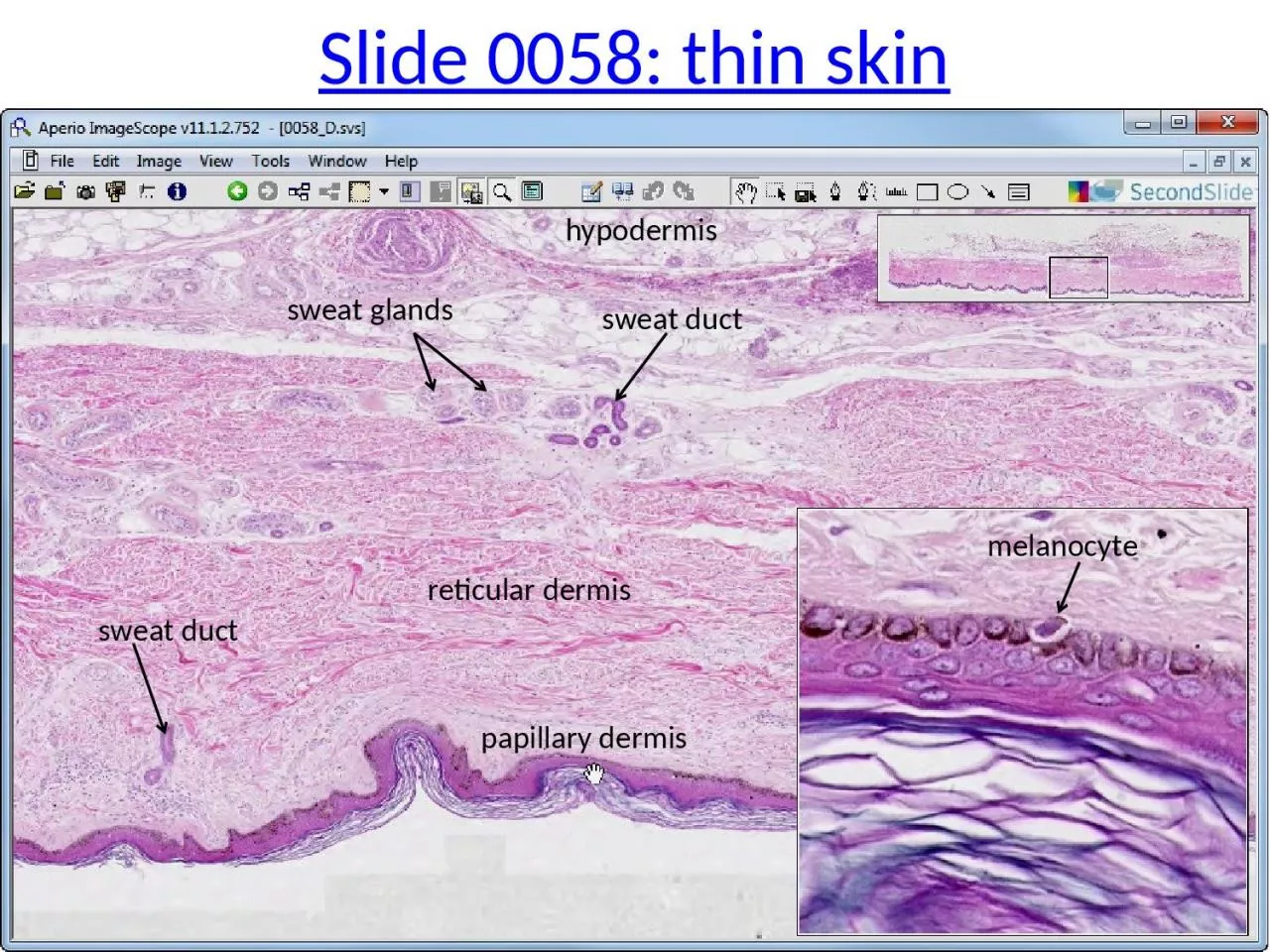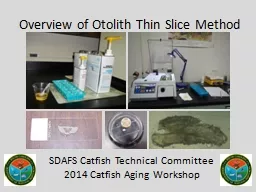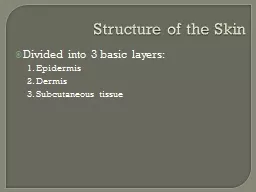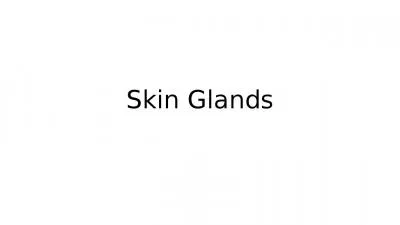PPT-Slide 0058: thin skin reticular dermis
Author : davies | Published Date : 2022-06-21
papillary dermis s weat duct hypodermis s weat glands s weat duct melanocyte Melanocytes amp Langerhans Cells melanocytes Langerhans cells sb sp sg sc Slide 0059
Presentation Embed Code
Download Presentation
Download Presentation The PPT/PDF document "Slide 0058: thin skin reticular dermis" is the property of its rightful owner. Permission is granted to download and print the materials on this website for personal, non-commercial use only, and to display it on your personal computer provided you do not modify the materials and that you retain all copyright notices contained in the materials. By downloading content from our website, you accept the terms of this agreement.
Slide 0058: thin skin reticular dermis: Transcript
Download Rules Of Document
"Slide 0058: thin skin reticular dermis"The content belongs to its owner. You may download and print it for personal use, without modification, and keep all copyright notices. By downloading, you agree to these terms.
Related Documents














